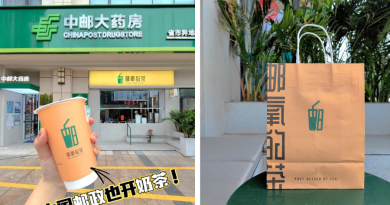NIO is a Forerunner in China’s Ambitious Plan to Turn Electric Vehicles into Power Banks
According to Sina Finance, China is currently working on a new electric vehicle charging infrastructure that will have vehicle-to-grid (V2G) capabilities, meaning an electric vehicle can not only draw electricity from the grid but is also able to back feed extra electricity into the grid during peak hours to reduce electricity generation demands from power plants.
Several leading Chinese electric car manufacturers has already implemented this feature in their newer models. Among them, NIO is the first to equip this capability to their entire lineup.

How the V2G model works. Source: Journal of Electronic Science and Technology
Let’s Give an Example
According to the example from Sina Finance, the price of electricity is 0.3023 RMB/kWh during the off-peak hours (11pm to 7am the next day), and 1.4167 RMB/kWh during peak hours (10am to 3pm, 6pm to 9pm), normal hours is 1.2884 RMB/kWh.
In Beijing, at one of the buildings testing out the V2G model, electric vehicles that are discharged to feed the building during peak hours can earn 0.7 yuan/kWh. That gives the vehicle owners nearly 40 cents in profit per kWh of electricity.
How it would work: one of the employees that works in the building, Ms. Yan, will fully charge her electric car during the off-peak hours at her home. After arriving at the company during the day, she plugs her electric car to the V2G capable charging station. The V2G platform automatically charges and discharges according to the needs of the car owner and the demand of the grid. Ms. Yan’s electric vehicle battery has a capacity of 52 kWh. After deducting the electricity she requires to keep in the car for commuting to and from work, the discharge capacity is about 30 kWh each time, and her net profit is 12 RMB.
The good
It may seem counterproductive to charge an electric vehicle and then discharge without using it. However, as you can see from the example above, there are incentives for vehicle owners to participate in the V2G program. Although owners are not going to save a significant amount in one charge, it could make a huge difference throughout the life of the vehicle. “It can cover daily driving expenses and have additional benefits.” Ms. Yan said.
And the process is convenient. Many EV owners are already trying to take advantage of off-peak cost savings. Most modern electric vehicles are already able to be set to charge only during off peak hours, meaning the owner can have the vehicle plugged in at any time, but it won’t start charging until off-peak hours.
Businesses are trying out other incentives as well. For example, at Shanghai Automobile Innovation Park where NIO is headquartered, a public charging and discharging station was put into operation in the late September 2020, with a total of 15 V2G stations. The station is funded and constructed by the State Grid Electric Vehicle Company and operated by NIO.
Liu Jun, an interactive product manager at NIO said she normally discharges her electric car twice a week, each time about 35-40 kilowatt-hours. This V2G station has a different rewarding system than the station iwe mentioned in Beijing, car owners get points instead of money, and each kilowatt-hour of electricity is exchanged for 8 points. Points can be exchanged for event tickets, to purchase goods, and pay for charging fees in this plaza.
Shopping centers could adopt this model in the future, rewarding car owners with membership points that can be redeemed for discounts or special offers at stores in the mall.
The bad
With the current technology, we can only charge and discharge the battery so many times and then it needs to be replaced. By participating in V2G program, a vehicle owner is potentially shortening their vehicle’s battery life. This is not a problem for NIO owners though as NIO allows users to swap their batteries at any time using their automated battery swapping stations.
What’s more, the factory warranties on electric vehicles include normal usage, and right now the V2G model has not been taken into consideration by many companies and may not be specifically mentioned in the warranty, so until these issues have been resolved, many consumers might not be willing to participate.
Another downside is, lets say I only need 20 KWh of range each day and I have a 50-kWh battery. I set the computer to discharge 30 kWh of electricity during peak hours from my car, so by the time I leave work my car should have roughly around 20 kilowatt hours of electricity, which is more than enough for me to go home.
But what happens if something came up and I need to run an errand?

Conclusion
In my opinion, the V2G program is extremely beneficial towards the environment. In China, peak-hour electricity is still generated mainly from coal and fossil fuel, China is moving quickly towards renewable energy, but with 1.4 billion people, the demand is just too vast to rely on renewable energy alone, at least for now.
Without the V2G program, yes – Chinese consumers will all have electric vehicles by 2035, but that could actually hurt the environment more because these vehicles will all be running on electricity generated by coal and fossil fuels.
The V2G program will significantly reduce the reliance on coal and fossil fuel by storing clean energy that is generated during off peak hours, then feed back to the grid during peak hours. Less demand equals less coal and fossil fuel being burned for energy.
Right now, there is not a uniformed rewarding policy, some are rewarding vehicle owners with money and others are rewarding with shopping points or gifts. In my opinion, regardless of what kind of reward is given to the vehicle owners, the size of the incentives will need to increase if China wants to fully implement this and get millions of people to participate nationwide.
Read More:
Technical investigation on V2G, S2V, and V2I for next generation smart city planning




